The Val Di Cecina refers to the territory crossed by the river Cecina, from the interior of the country with the city of Volterra (called Caecina by the Romans) to the Tuscan coast with its seaside area, bordered by the “Etruscan coast”.
Volterra is the most fascinating destination of the territory, marked by the Middle Ages, but also by its Etruscan and Roman heritage.
Beyond the latter, the villages of the Val di Cecina are not the most touristic in Tuscany and retain a certain authenticity. It is also the largest geothermal area in Europe, with its geothermal manifestations and related industrial archaeology, and old mines.
Between the coast and the hills, it is the space of a “Maremma”, living partly from the vine, but also from its olives and its cheeses.
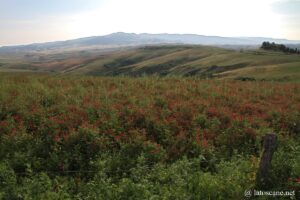
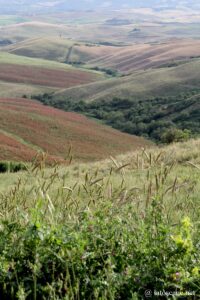
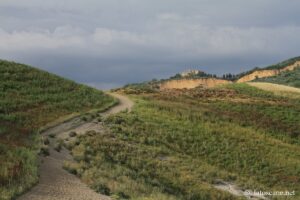
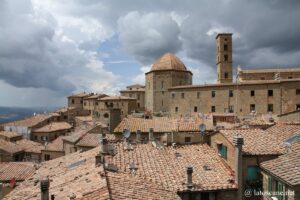
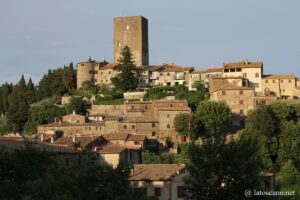
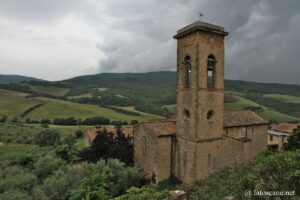
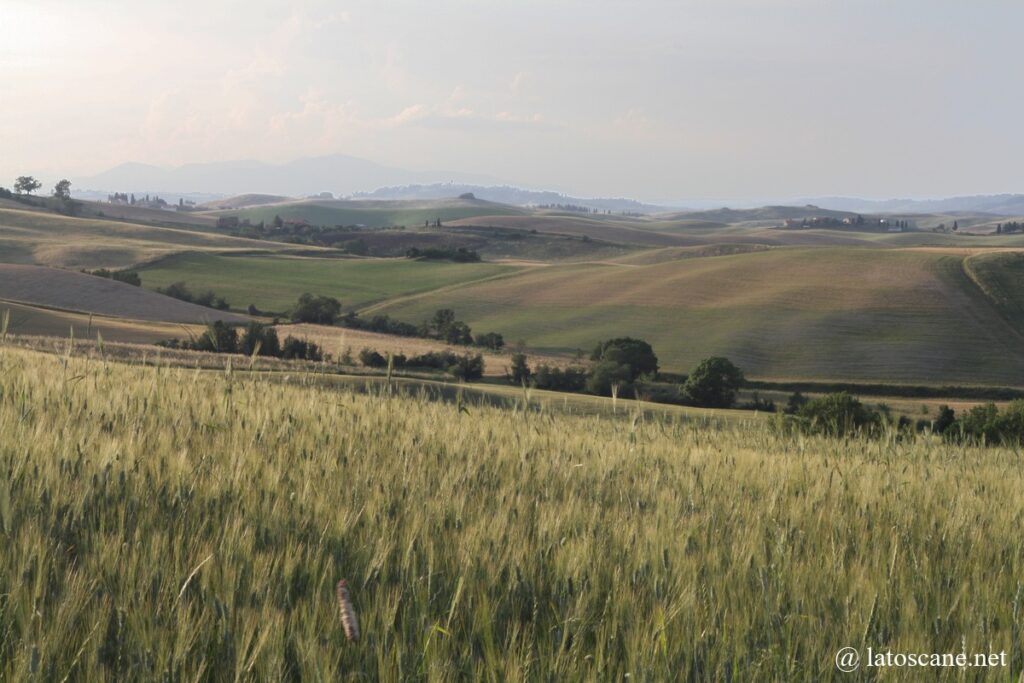
Volterra in Val di Cecina
One of the most beautiful medieval towns in Italy, to be discovered in the section dedicated to Volterra.
Montecatini Val di Cecina
At 15 km from Volterra, Montecatini Val di Cecina – formerly called Castrum Montis Leonis – is a town that was fortified with a solid castle, raised by the Belforti in 960, family which then dominated Volterra.
In the Valley of Cecina, it was long disputed between Volterra and Pisa, with the nearby fortress of Sillana.
Probably since the Etruscans and until the nineteenth century, this territory lived from the exploitation of copper.
You can also visit the Camporciano mining site, which was the largest copper mine in Europe. This Museum of the Mine is a fine example of industrial archaeology with galleries and machines of the nineteenth century, and the church Santa Barbara, patron saint of miners.
The town has a compact medieval centre and remains of this past with the 14th century Pretorio Palace and the faceless church of San Biagio.
On an ancient fortified site, the Belforti Tower – now private – was built in the 14th century by the Belforti, with particularly thick black stone walls.
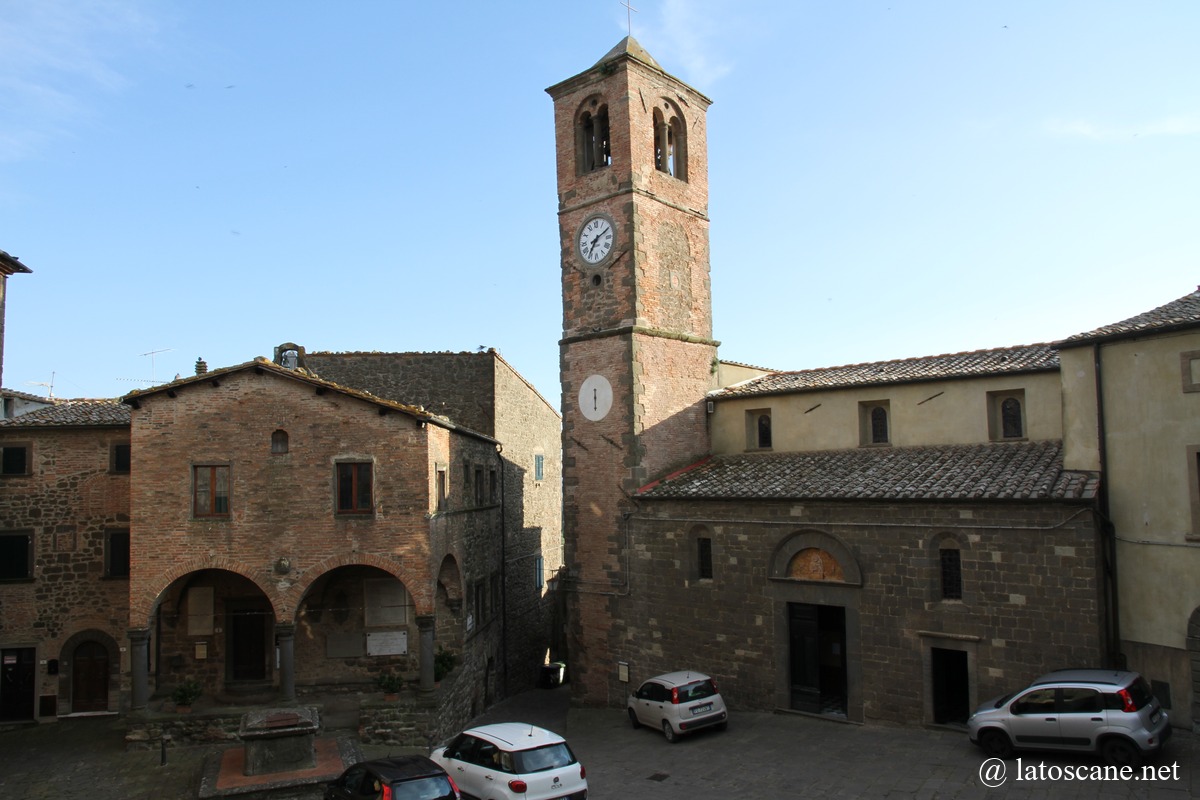
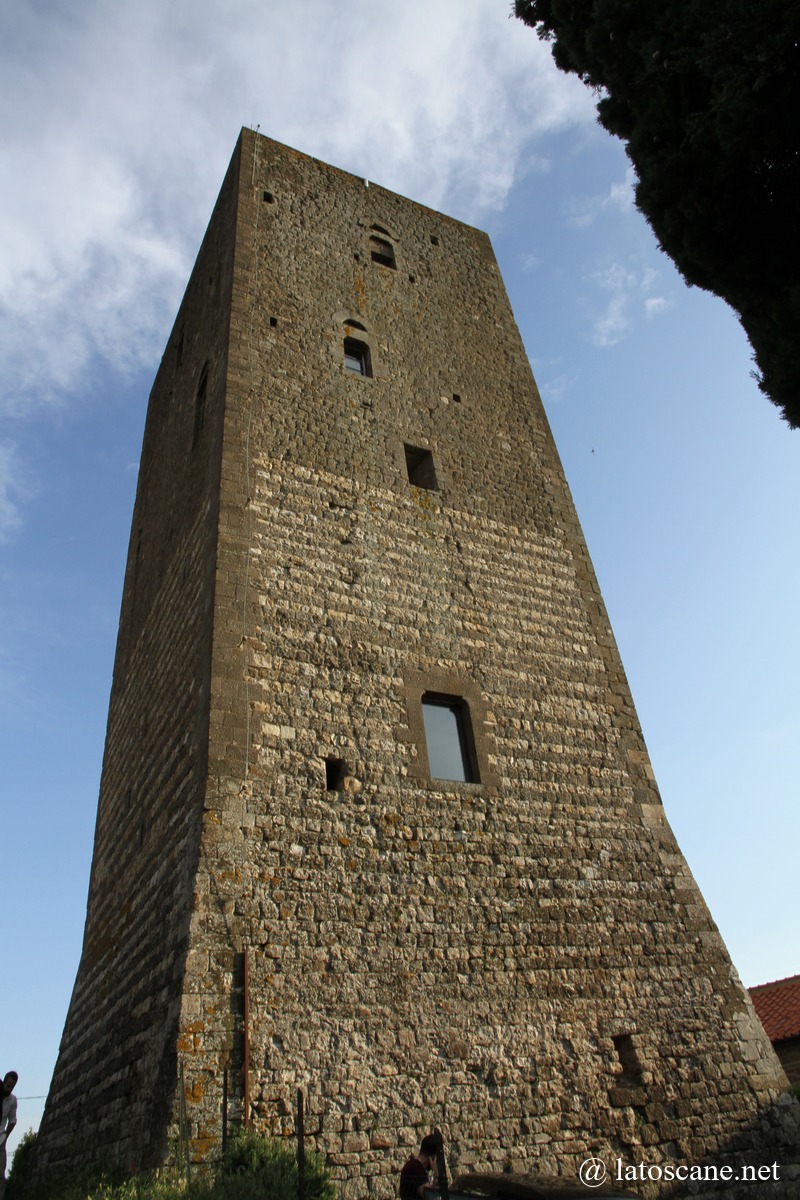
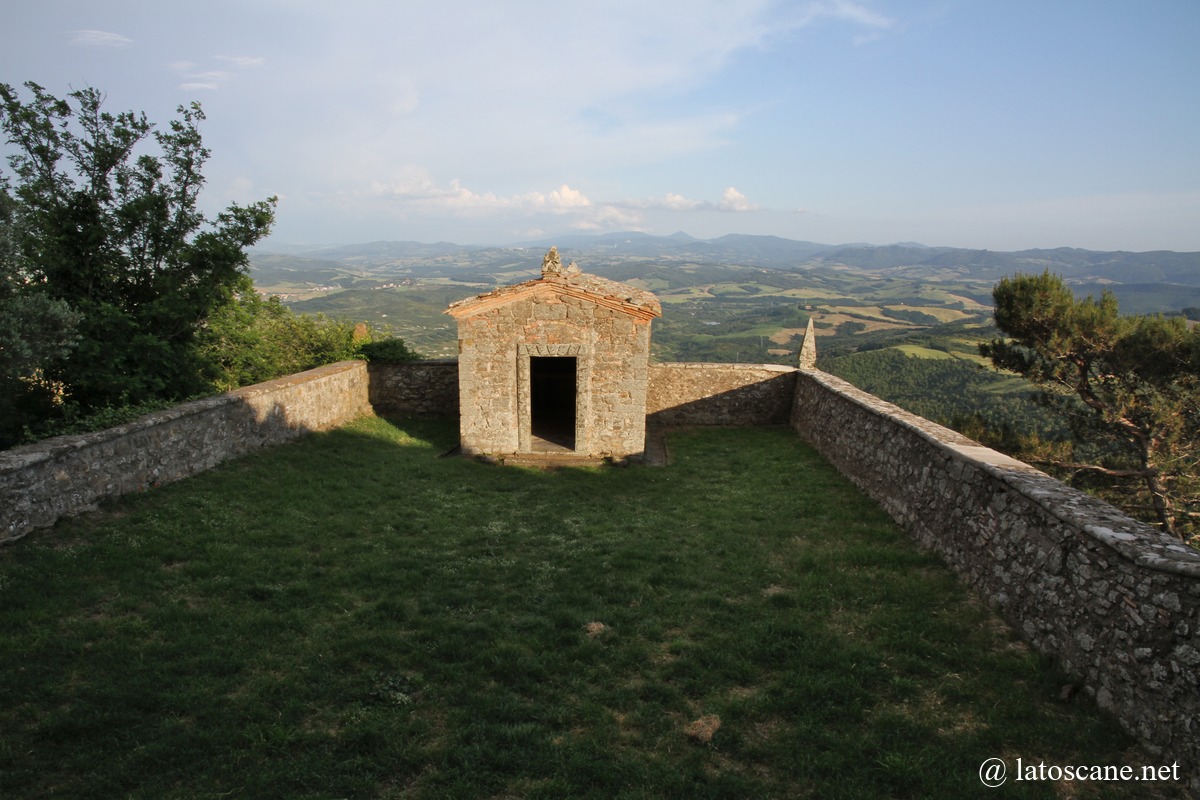
Pomarance
Pomarance, a curious and isolated town, is the gateway to the largest geothermal area in Europe, known as the Devil’s Valley.
Pomarance (of Etruscan and medieval origin) still has the remains of its important medieval castle, the 12th century Romanesque church with works by local painters Niccolò Cercignani and Cristofano Roncalli (known as Pomarancio), the Piazza della Pretura and several 19th century palaces on Via Roncalli.
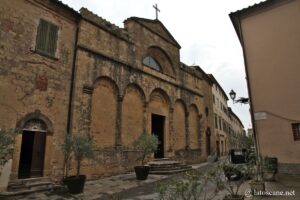
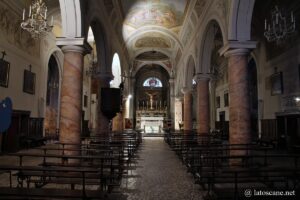
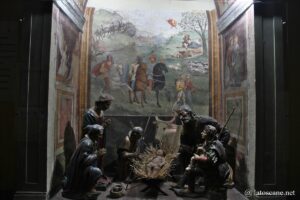
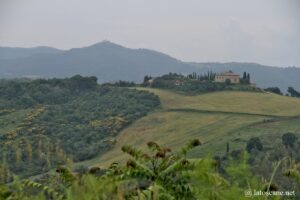
Rocca Sillana
Near San Dalmazio, the Rocca Sillana is one of the most important fortresses in Tuscany, standing high on a small mountain surrounded by dense vegetation. Unlike today, its surroundings were populated in the Middle Ages with a village now in ruins.
From the top of the Rocca you can enjoy a beautiful panorama on this part of Tuscany.
In the surroundings, there are still medieval remains of the Monastery of San Dalmazio and the Church of San Giovanni dating at least from the 9th century, which is one of the most important in the Val di Cecina.
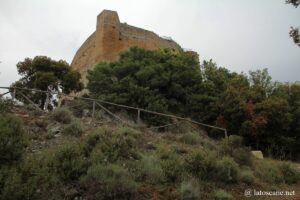
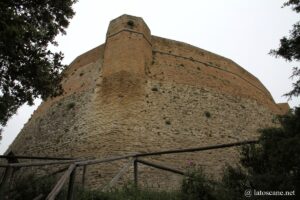
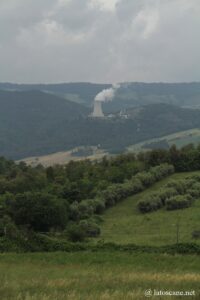
Larderello
In the heart of the Devil’s Valley, Larderello is a historic industrial site known for its geothermal phenomena including vapors, geysers and sulphur lagoons. The Larderello Geothermal Museum tells the story and techniques used to harness geothermal energy.
Castelnuovo Val di Cecina
Castelnuovo Val di Cecina, on the border of the provinces of Siena and Grosseto, is perched at an altitude of 576 meters between pretty hills of vineyards and olive trees and chestnut forests.
Its medieval centre is characterized by its stone houses, stairs, ancient doors, and alleys, in particular the “chiassino” 50 centimeters wide.
In the surrounding area there are fortified medieval villages like Montecastelli Pisano with the Romanesque church of the Santi Giacomo e Filippo, some Etruscan sites including a hypogeum from VI BC, the remains of copper mines closed since 1941, and a small museum of peasant civilization.
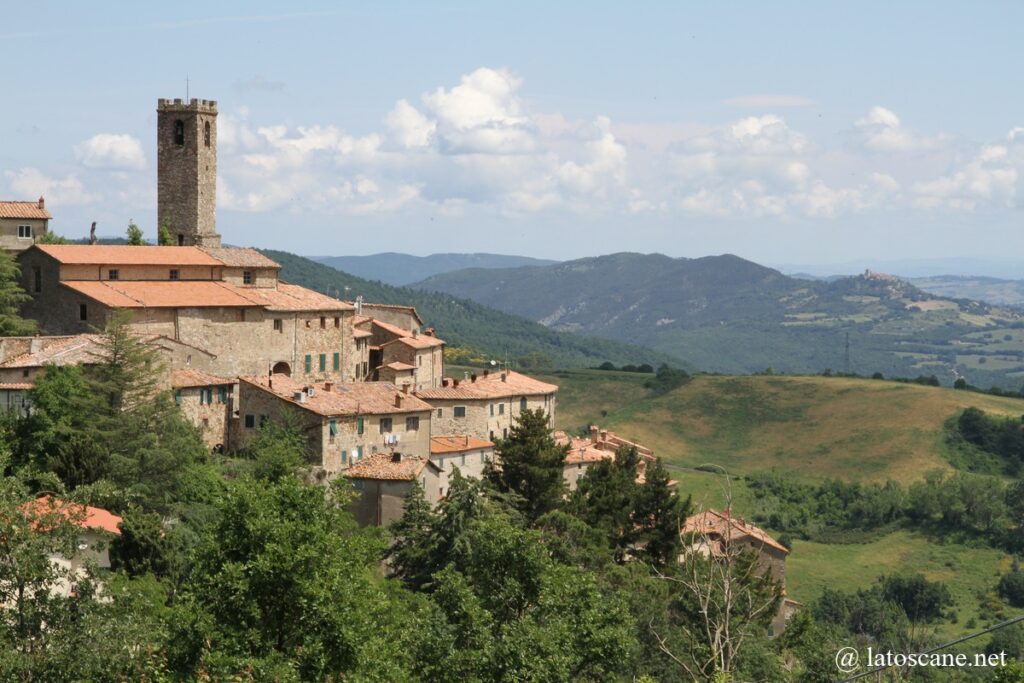
Sasso Pisano and Monterotondo Marittimo
South of Castelnuovo, at Sasso Pisano you can see geothermal phenomena such as fumaroles and geysers or cold vapours in a volcanic landscape mixed with the smell of sulfur. From this Fumarole Park, a nearly 10 km trail joins the Geothermal Natural Park Biancane in Monterotondo Marittimo further south, and close to the old Bagnone thermal baths, a sacred complex from the 3rd century BC, still with hot springs. These are the only known Etruscan baths in Tuscany.
Sasso also houses the Museo Etrusco Romano Antiquarium, with its finds from the sacred site of Bagnone.
Biancane Geothermal Park
In the Biancane Park in Monterotondo, there are many natural geothermal phenomena, including white vapors and boiling water gushing from the ground, boiling mud, surrounded by red, ochre and white rocks. As already mentioned, a path leads to the fumaroles of Sasso Pisano and the baths of Etruscan origin.
Querceto
Querceto is another old fortified town, interesting with its beautiful Ginori Castle renovated at the beginning of the 20th century. From the 13th century, this stronghold also allowed to exploit salt water sources and metals (silver, copper and mercury).
Its Romanesque church of San Giovanni Battista dates back to at least the 13th century.
The Sassa
La Sassa and another medieval town, located on the highest relief of the region, overlooking the coastal plain, which revolves around the Medici tower.
Canneto
Founded at the same time as the abbey of San Pietro in Palazzuolo – whose ruins are a few kilometers southward -, as fiefs of the abbey of Monteverdi, the village of Canneto is surrounded by its ancient walls. It was a defensive stronghold at the junction of the Val di Cecina, the Val di Cornia and the Metalliferous hills.
It is built on a rocky outcrop, preserving old stone houses, beautiful streets and squares.
Monteverdi Marittimo
Near the town of Canneto, Monteverdi Marittimo is a quiet village that developed under the Lombards with the foundation of the Benedictine monastery of San Pietro in Palazzuolo by Saint Walfrid della Gherardesca.
The centre of the fortified town has two remarkable churches: the Church of Sant’Andrea, built in the 14th century and the 18th-century Chapel of Santissimo Sacramento, which preserves the Black Christ, a wooden crucifix from the 14th-15th centuries.
To the north, the natural reserve of Monterufoli-Caselli has beautiful woods crossed by rivers and waterfalls, where still live in the wild “Cavallino di Monterufoli”, a small robust horse.
Towards the Etruscan coast
From Montescudaio you can see the Tyrrhenian Sea from the terrace of the old castle, above walls 15 meters high.
In the hills, Guardistallo is a quiet village that was originally a Lombard castle and became rich in the nineteenth century.
Casale Marittimo is also a pretty medieval town with a beautiful panoramic position up to the sea, the historical heart of the Castello and its circular enclosure, and nearby the Etruscan necropolis of Casa Nocera from the VIIth century BCC.
Near Bibbona the yellow caves are ancient marine cavities arranged by the Etruscans in tombs with curious rooms separated by a false column.
→ Read the section on the mouth of the Val di Cecina from the Etruscan Coast
Tourist map of Val di Cecina
If you see this after your page is loaded completely, leafletJS files are missing.
Links and informations
- Tourist portals: valdelsavaldicecina.it, www.terredipisa.it
- Informations : www.paesaggiotoscana.it, it.wikipedia.org
Articles about Val di Cecina
- Volterra in Tuscany
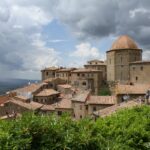 The town of Volterra has a unique charm, becoming one of the favorite destinations in Tuscany, not only for its heritage. Its historic centre dates back to the Etruscan era ...
The town of Volterra has a unique charm, becoming one of the favorite destinations in Tuscany, not only for its heritage. Its historic centre dates back to the Etruscan era ... - Val di Cecina in Tuscany
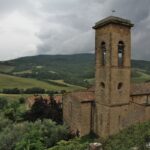 The Val Di Cecina refers to the territory crossed by the river Cecina, from the interior of the country with the city of Volterra (called Caecina by the Romans) to ...
The Val Di Cecina refers to the territory crossed by the river Cecina, from the interior of the country with the city of Volterra (called Caecina by the Romans) to ...
No Comments Yet